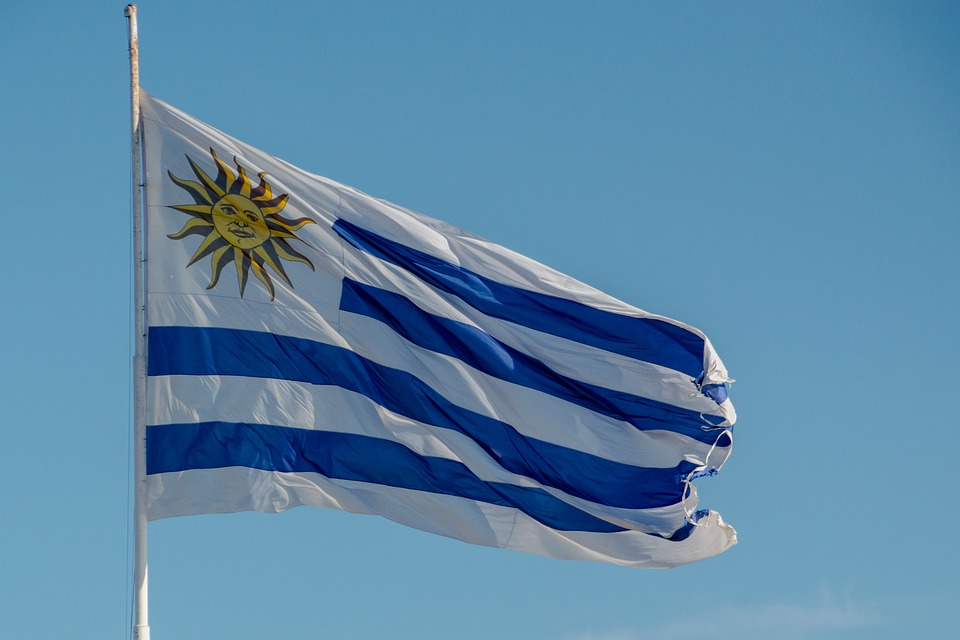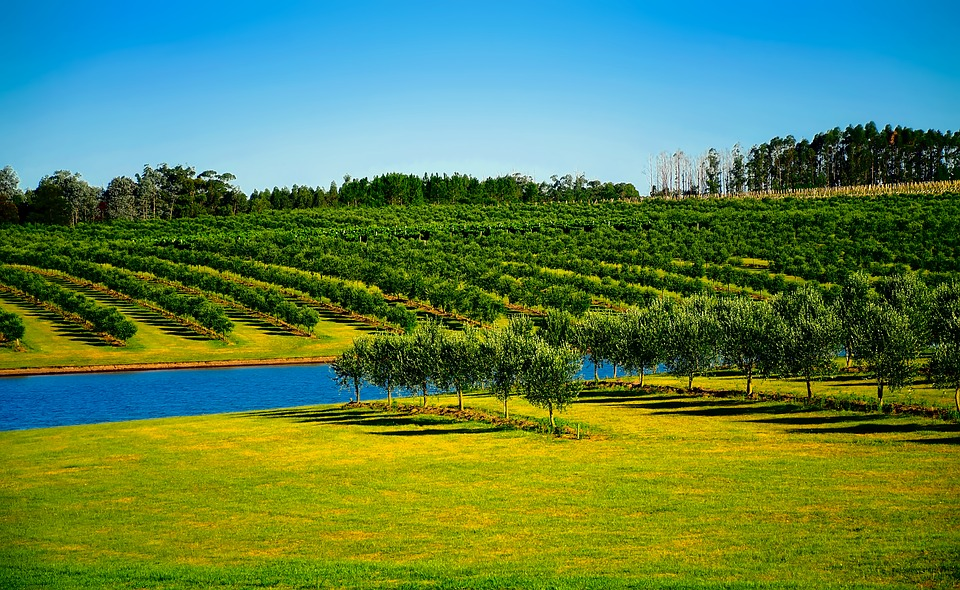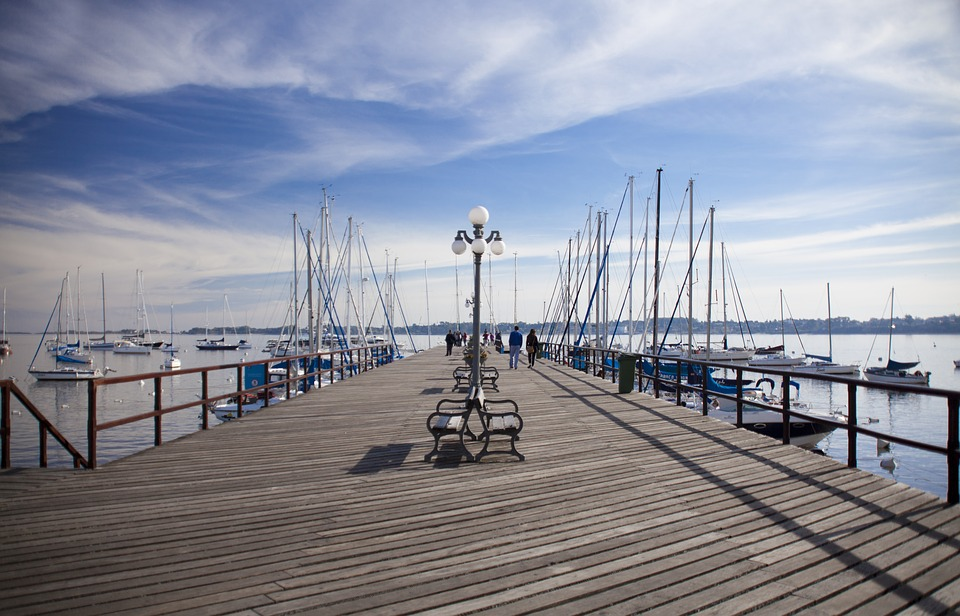37 Interesting Facts about Uruguay – Free Laptops for Students!
The Oriental Republic of Uruguay, commonly called Uruguay, is a country in South America. Uruguay shares its borders with Brazil to the north and covers approximately 176,000 square kilometres. The country is among the fastest developing South American and Latin American countries in the world. Uruguay is the only country situated completely to the south of the Tropic of Capricorn. Uruguay means river of painted birds. Uruguay is a Guarani word for “river where the bird lives”. Its name originated from the famous Uruguay River.

Football is the most popular sport in Uruguay due to which football and FIFA fans may be well aware of the Uruguay national football team. Uruguay is a popular name among football lovers because the team defeated Brazil and won the American Football Cup! In this article, we’ve listed some unique facts about Uruguay that are sure to pique your interest!
Interesting Facts About Uruguay
Geography
Uruguay has one of the largest coastlines. It stretches for over 660 kilometres, making Uruguay one of the countries with the largest coastlines, closely following Chile. Read on for more geographical facts about Uruguay!
- Second smallest nation: Uruguay is the 2nd-smallest nation in South America. With a continental land area of 176,214 square kilometres, it is the second smallest sovereign nation on the continent of South America. It is a close second to Suriname.
- Southernmost city in the Americas: Uruguay hosts the southernmost city in America, Montevideo. The city has a population of 1.3 million and is spread over 201 square kilometres. The city also boasts a robust port that acts as the southernmost port in the region.
- A unique border with neighbours: The Uruguay River separates the country from its neighbour, Argentina. Uruguay rests east of the river, while Argentina rests on the left. The river also flows partially between the borders of Uruguay and Brazil.

- An ecoregion unique to the country: The ecoregion of Uruguay is unique to the country. It consists mostly of grasslands and palm savanna along with some forests and rivers. As a result, agriculture and cattle herding are the most popular occupations in the country. 60% of the land is used just for cattle farming. While cattle is majorly used for local meat, a significant portion is also exported, and therefore, Uruguay also ranks high in the export index.
- Temperature stability: Uruguay is one of very few countries with uniform temperatures. Most countries experience temperature fluctuations in different seasons, whereas Uruguay mostly has uniform climatic conditions with no severe winters.
Nature and Animals
- National parks and wetlands: Uruguay has 10 national parks. It has five national parks in the wetland areas (i.e, in the east), three in the hilly areas (i.e., central Uruguay), and one in the west (i.e., along Rio Uruguay).
- A country of grasslands: Most of Uruguay’s land includes medium-tall grassland. The ecoregion of Uruguay, called Uruguay Savanna, spans over 353 thousand square kilometres. It covers some parts of Brazil and Argentina as well. This region is rich in flora and fauna, many of them endangered.
- Home to unique birds and animals: The ecoregion of Uruguay Savanna is home to approximately 80 species of birds unique to the region. This includes greater rhea, ochre-breasted pipit, and saffron-cowled blackbird. Uruguay is also home to the largest rodent in the world, Capybaras (Hydrochoerus hydrochaeris). They are mainly found in Brazil, Uruguay, and Argentina. The government protects 3.43% of the ecoregion in Uruguay, Savanna.

Population and People
- Unseen population growth. While the current population of Uruguay is in the millions, at the time of independence the country had a population of 75,000, which further decreased due to military conflicts and civil wars. The population as seen now only increased in the late 1900s.
- Free laptops for all students: In 2013, Uruguay became the first country to give free laptops to over 350,000 students. Every primary school student was given a free laptop. Additionally, the country also gave free laptops to 16,000 primary school teachers. The laptops provided are also known as ‘$100 laptops’. This scheme was part of the Plan Cibel, which was started in 2007.
- Official languages: The official language of Uruguay is Spanish. The other largely spoken languages are Uruguayan and Portuguese. This is because a majority of the population is descendants of Spanish immigrants who settled in Brazil, Argentina, and Uruguay. The constitution of Uruguay accepts both Spanish, Uruguayan, and Portuguese.
- No official religion: In the survey by Global Religious Futures, it was found that over 41.5% of Uruguayans do not follow any religion. 57% are Christians, and less than 1.5% follow other religions. The country celebrates the most important Christian holidays. Most of these holidays are renamed to no longer resemble the original Christmas holiday. For example, while most countries celebrate the 25th of December as Christmas, Uruguay celebrates “Day of the Family”. Similarly, the 12th of October is celebrated as “Day of Race” rather than “Columbus Day”.
- Hosts for the first world cup: The first-ever world cup was held in 1930 in Uruguay. Soon after this, the world cup was dropped from the Olympics program. Uruguay was also the winner of the first football world cup. It hosted the first-ever football tournament in 1902.
- Won against Brazil: Uruguay is one of the few countries to have won against Brazil in the Football World Cup. Uruguay’s victory was on Brazil’s homeground, making this a memorable event for Uruguay. This victory was further bolstered by the population’s love for the game.

Culture
- Descendants of Europe: Uruguayan culture is influenced by Europe. There are a lot of similarities between European cultures, particularly those in southern Europe and Uruguayan culture. This is especially true for Spanish and Portuguese cultures.
- Birthplace of Tango: Uruguay is the birthplace of Tango. Tango is the traditional music and dance of Uruguay and Argentina. As a result, both these countries are jointly credited for the introduction of Tango.
- UNESCO World Heritage Sites: UNESCO declared two world heritage sites in Uruguay. The first is located in the Fray Bentos Industrial landscape. The second is the Historic Quarter of the City of Colonia del Sacramento.
- Smallest spanish-speaking nation: Uruguay is one of the tiniest Spanish-speaking countries in South America. This is because while Suriname is the smallest country in South America, it was part of the Kingdom of the Netherlands. As a result, most people from Suriname adopted Dutch as the official language.
- National dance of Uruguay: The national dance of Uruguay is called Candomble. The folk dance, which originates from Africa, was brought to Uruguay by African slaves liberated in the 1800s. As a result, the dance is a mixture of many different African traditions, choreography, rhythms, and movements.
Food
- Food inspired by European cuisine: Uruguayan food is very similar to European dishes. As the people of Uruguay are mostly descendants of immigrants from Spain, France, Italy, and Brazil, most traditional Uruguayan dishes resemble the dishes from these countries.
- Birthplace of Dulce de leche: Dulce de leche originates from Uruguay. Dulce de leche, a common spread that is used by many instead of peanut butter, comes from Uruguay. The spread is famous in Latin America and is made by slowly heating sugar and milk until it’s thick like a spread.
- National dish of Uruguay: Uruguay’s national dish, Chivito, has a unique meaning. Chivito translates to ‘young goat’. However, there is no goat added to Chivito. Instead, the sandwich is made mostly with beef steak, mozzarella, tomatoes, eggs, bacon, ham, and olives.
- Largest consumer of beef: Uruguay is the largest consumer of beef, beating both Argentina and Hong Kong. Uruguay consumes over 124 pounds of beef per capita and a total of 427 million pounds of beef annually.

- Most popular drink in Uruguay: Mate is the most popular tea in Uruguay. Mate is an infusion tea made from the leaves of the yerba mate plant. The leaves are steeped in water. This is the most commonly consumed beverage in Uruguay. Transportable thermos designed specifically for Mate is very popular in Uruguay.
- A unique Gnocchi festival: Uruguay celebrates a Gnocchi festival! While Gnocchi originates from Italy and is an important part of Italian cuisine, the Gnocchi festival is celebrated in Uruguay. The day of the Gnocchi is celebrated on the 29th of each month. Today, the celebration signifies prosperity and luck.
Economy
- International rankings: Uruguay ranks highest on the list for democracy, peace, and freedom of the press. This is an impressive feat for a tiny country in Southern America. The country follows closely behind some of the larger nations, including the UK, the USA and Canada.
- Depends only on renewable energy: While many countries import coal, oil, and other sources of fuel to generate electricity, Uruguay depends entirely on renewable sources. 98-100% of the country’s energy is generated by renewable power plants. Within 15 years, Uruguay reduced its oil imports from 27% to 0-1%.
- Economic freedom: Uruguay is the 34th freest country in the world, receiving an economic freedom score of 70.0 on the freedom index of 2022. Uruguay also ranks 5th among the 32 countries in North America and South America.
- Robust population: According to a 2019 estimate, approximately 3,518,000 people live in Uruguay. As a result, the country has a population density of 19.8 square kilometres, i.e. 99th in the world.
- Growing and developing GDP: According to a 2020 estimate, the total GDP of Uruguay is USD 86.56 billion, making it a part of the top 100 countries. The GDP per capita of Uruguay is USD 24,516, which is 59th on the global scale.
- Unaffected by international recession: The 2007 recession that affected everyone globally had little impact on Uruguay. It was one of the only countries in America that did not face any recession in either 2007 or 2009. This makes Uruguay one of the few countries to not be affected. Furthermore, while many countries faced severe unemployment issues, the employment rate in Uruguay was not affected.
- Largest exporter of soybean: Uruguay is one of the largest exporters in the world. Uruguay ranks 9th in Soybean export, 12th in greasy wood export, 14th in horse meat export and beeswax, and 17th in the export of quinces. Beef is the main export of Uruguay, totalling over USD 1 billion in 2006.
- One of the largest tourism industries: Tourism is the largest industry in Uruguay. The tourism industry of Uruguay is responsible for approximately 9% of the country’s GDP. Furthermore, it provides approximately 97,000 jobs to locals.

- The Port of Montevideo: The Port of Montevideo handles over 1 million containers every year, making it the most advanced port terminal in South America. Port of Montevideo located in the capital of Uruguay is the southernmost point in South America.
Government and Society
- Longest national anthem: Uruguay has the world’s longest national anthem. The Himno Nacional de Uruguay takes between 4.5 to 6 minutes to sing. The national anthem has 105 bars of music. However, this was changed recently when the Greek government adopted a new national anthem with over 150 bars, which takes over 7 minutes to finish.
- Independence from its neighbour: Uruguay gained independence in 1825! Uruguay gained independence not from any European countries, as you would believe based on their Spanish and Portuguese influence, but from Brazil. While Uruguay was recognized as a country five short years after its independence, the country wasn’t admitted into the United Nations until 1945.
- Deploys the highest number of soldiers for the UN: Uruguay sends more troops to United Nations peacekeeping missions than any other country. It deployed over 2,500 soldiers on over 12 United Nations peacekeeping missions between 1945 and 2003.
- 99% homes with electricity: Almost 99% of homes in Uruguay are powered by electricity, which is much higher than in many developed countries, including the US. Furthermore, 100% of the population of Uruguay has access to stable electricity.
- First to legalise divorce: Uruguay legalised divorce in 1907, being the first country to do the same. It is also the first country to establish a welfare state. In contrast, divorce was legalised in the USA only in 1969. This makes Uruguay one of the few countries that allowed couples to be both separated and unseparated at the time of the first world war.
- First to legalise marijuana: Uruguay was the first country to legalise marijuana. The growth, use, and sale of cannabis were legalised in Uruguay in December 2013. In contrast, many developed countries including Netherlands, Canada, Colombia and Spain, legalised marijuana between 2015-2020. Many developed countries including USA have yet to legalise marjuana in all parts of the country.
- Constitution that can be changed: Uruguay is one of the few countries where the constitution allows the citizens to repeal laws or change the constitution. This can be done if there is a majority and if the initiative is popular and ends with a nationwide referendum. This has been used several times to remove leaders and the military regime of leaders who violated human rights, and to defend pensions, protect natural resources, and so forth.
Learn More!
These are some interesting Uruguay facts that you can share with your kids to encourage them to learn more about geography and different countries of the world. As these facts show you, Uruguay is a fascinating country with a rich history, culture, and geography. The country is home to some of the most notable rivers. Uruguayans’ love for football is also well known.
Visit our Cool Kid Facts website for more awesome topics!
